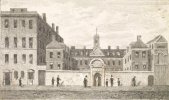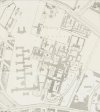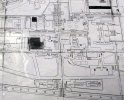Gill Wiseman
proper brummie kid
Child born in Birmingham Workhouse
I have just received the birth certificate for Mary Ann Cowdrill which shows only a mothers name of Rebecca Cowdrill and that the birth was at the Birmingham Workhouse on 20th May 1851.
I cannot find Rebecca on any census returns. Could anyone tell me how I can look at the 1851 Birmingham Workhouse Census return to see if she was there at the time - maybe her name was transcribed as something else.
Think I have found a record of her death in 1868 aged 49 this time spelt
Rebecca Crowdrill. She would have been around 32 when she had the baby.
Any help appreciated.
Gill
I have just received the birth certificate for Mary Ann Cowdrill which shows only a mothers name of Rebecca Cowdrill and that the birth was at the Birmingham Workhouse on 20th May 1851.
I cannot find Rebecca on any census returns. Could anyone tell me how I can look at the 1851 Birmingham Workhouse Census return to see if she was there at the time - maybe her name was transcribed as something else.
Think I have found a record of her death in 1868 aged 49 this time spelt
Rebecca Crowdrill. She would have been around 32 when she had the baby.
Any help appreciated.
Gill





